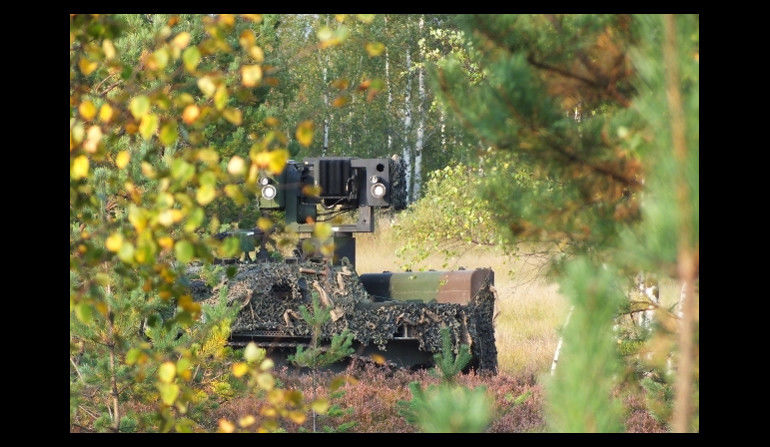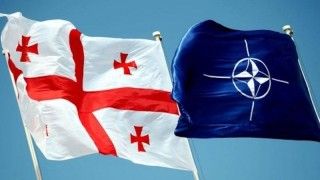- WIADOMOŚCI
- ANALIZA
Will NATO Reinforce The Air Defence Of The Baltic States?
General Phillip Breedlove, Commander of the US Armed Forces in Europe, stated that NATO shall get ready to carry out air defence operations in the Baltic states, also during the wartime. He also stressed the fact that Baltic Air Policing operation is a peacekeeping initiative, even though the activities within that scope were intensified, after the Ukrainian crisis broke out.
General Breedlove, during his visit to Lithuania, announced that NATO should get ready to conduct air defence operations within the Baltic Republics. According to the Xinhua outlet, analytical works related to such operations are currently being carried out, since NATO command requested air defence support scenarios to be prepared, with the Baltic states in mind. The conclusions will be taken into account by the alliance’s leadership.
Breedlove said that the alliance needs to be ready to conduct air defence operations, since air policing and air defence are two separate strategies, designed for two distinct situations and contexts. Breedlove also noted that Baltic Air Policing remains a peacekeeping mission, in his interview for the Polish Press Agency.
Baltic States have no fighter aircraft at their disposal. Air policing tasks are being currently realized by the NATO forces. Before the Ukrainian crisis broke out, four jets had been involved in the rotational presence in the region. After the events at the NATO’s Eastern Flank the quantity of jets was increased up to several examples, deployed by four nations (the fighter assets were also periodically stationed in Malbork). Currently, eight jets, based in Lithuania and Estonia, are involved in the Baltic Air Policing initiative.
The main goal is to scramble the jets, should any intrusion incidents take place, when it comes to the airspaces of the Baltic republics. However, Baltic Air Policing operational goal is not to defend the Baltic states, should conventional air-strikes be launched against those countries. This would require a set of different operational assumptions, peculiar of wartime operations. At the same time, the forces and assets involved in the initiative, without any relevant reinforcement, are not prepared to carry out a full scale, independent defensive operation – since they are not tasked with that mission.

Such circumstances would require the NATO command to take into account the actions undertaken by a potential adversary. This is related to a requirement of provision of ground based anti-aircraft and missile defence units for the NATO airbases. Moreover, steps shall be taken to introduce more assets (including more fighter aircraft) into operational use, even in case when they would be stationed outside the territories of the Baltic states. Airspace surveillance, reconnaissance and monitoring would also play a key role, in spite of the fact that stationary radar systems could become a subject of electronic warfare.
At the moment, the Baltic States have only VSHORAD systems at their disposal, such as the Swedish RBS-70, Polish Grom or US-made Stinger missiles. After the Ukrainian crisis had begun, steps were taken to acquire medium range air defence systems, also within the scope of analysis of potential joint procurement of a system by Lithuania, Latvia and Estonia. It is plausible that these countries are going to acquire a VSHORAD system with operational capabilities similar to the performance specification defined for the Polish Narew suite. Regardless of the above, it was also decided that acquisition of more MANPADS VSHORAD systems is required. Lithuania, e.g. procures the Polish Grom missiles.

General Breedlove’s statement is a proof of significance of air defence capabilities, provided both by the airborne, as well as by the land and naval assets operating in the region of the Baltic Sea. Before the Ukrainian crisis broke out, NATO had not been considering any sudden and direct threat within the Baltic States. Peaceful Baltic Air Policing initiative was the primary focus for the organization. However, as the commander’s statement suggested, operational options of supporting “combat” air defence operation in the Baltic Sea area are being currently a subject of scrutiny.

It shall be remembered though, that considering the operational burden, the Western SHORAD capabilities are vastly limited. Both in the United States of America, as well as in Germany, the “lower level” of the air defence system consists mainly of the VSHORAD Stinger AAMs. Thus, notwithstanding with the steps taken by the West or by the United States of America, systems to be procured for own forces will play a key role in cases of Lithuania, Latvia and Estonia. During his interview for Defence24.pl, Lithuanian Defence Minister declared that he is willing to construct the air defence system architecture in collaboration with Poland, Latvia and Estonia.

















